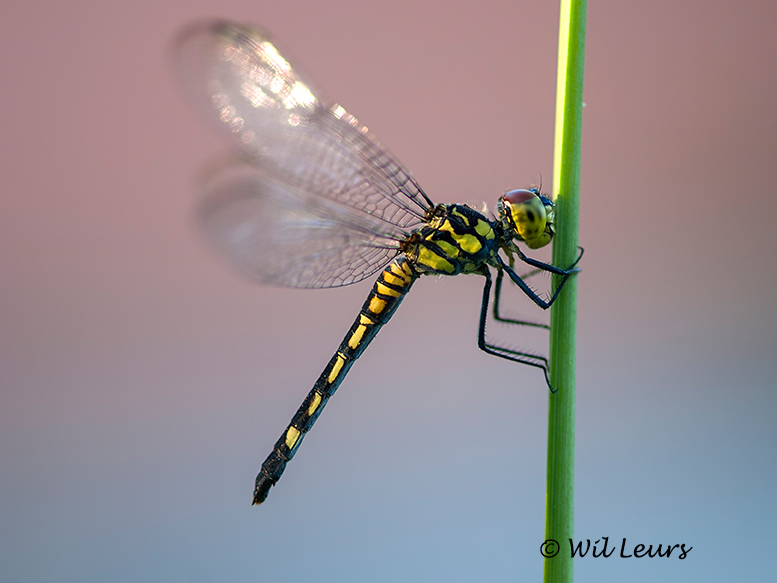View the above photo (by Wil Leurs) in OdonataMAP here.
Find this species in the FBIS database (Freshwater Biodiversity Information System) here.
Family Libellulidae
Chalcostephia flavifrons – INSPECTOR
Identification
Small size
Length up to 35mm; Wingspan reaches 66mm.
Males can be confused with an Orthetrum species or with Hemistigma albipunctum (African Piedspot). They are easily distinguished by their yellow faces and bright metallic green frons. The pale pterostigmas have a dark outline and are another good identification feature.
Females resemble those of Notiothemis jonesi (Eastern Forestwatcher). They can be differentiated by wing venation and the pale dark edged pterostigmas.
Click here for more details on identification.

Photo by Ryan Tippett
Habitat
This dragonfly iinhabits humid forests where it frequents ponds and the still backwaters of streams and rivers. It is a typical species of swamp forest and also occurs around the forested fringes of pans in low-lying and coastal areas.
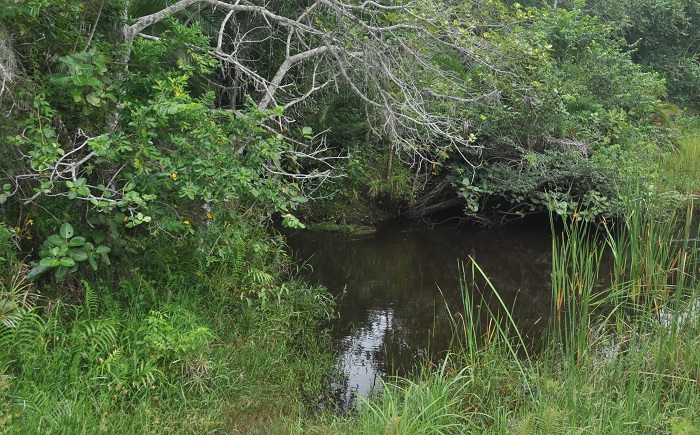
Photo by Ryan Tippett
Behaviour
Often found in the dappled light of the forest sub-canopy where the males sit prominently on the tips of twigs and branches over the water. Mostly sits between 1 to 3m above the ground or water. The ‘Inspector’ name is derived from its habit of moving the head at different angles when surveying its surroundings. The females can be found in the same area as the males but are usually further away from the water.
Status and Conservation
Due to its choice of habitat, Chalcostephia flavifrons is very localised in its occurence. They seldom occur in large numbers.
The Inspector is fairly sensitive to habitat degradation, but it does occur at some suitable man-made habitats and in places with some alien plant growth. Its habitat is threatened by agriculture in some areas.
It is listed as of Least Concern in the IUCN Red List of Threatened Species.
Distribution
It is native to tropical Africa, where it is widespread. Occurs from West Africa to East Africa and down to South Africa.
Below is a map showing the distribution of records for Inspector in the OdonataMAP database as at February 2020.
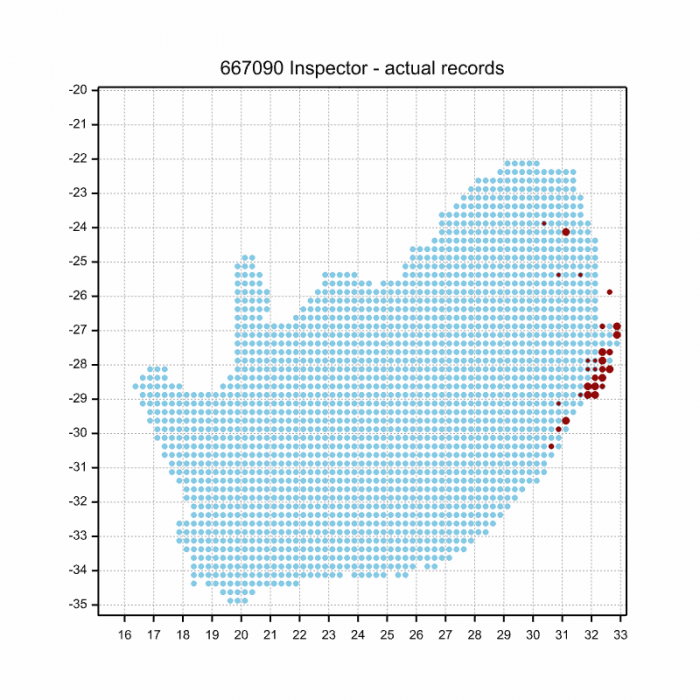
The next map below is an imputed map, produced by an interpolation algorithm, which attempts to generate a full distribution map from the partial information in the map above. This map will be improved by the submission of records to the OdonataMAP section of the Virtual Museum.
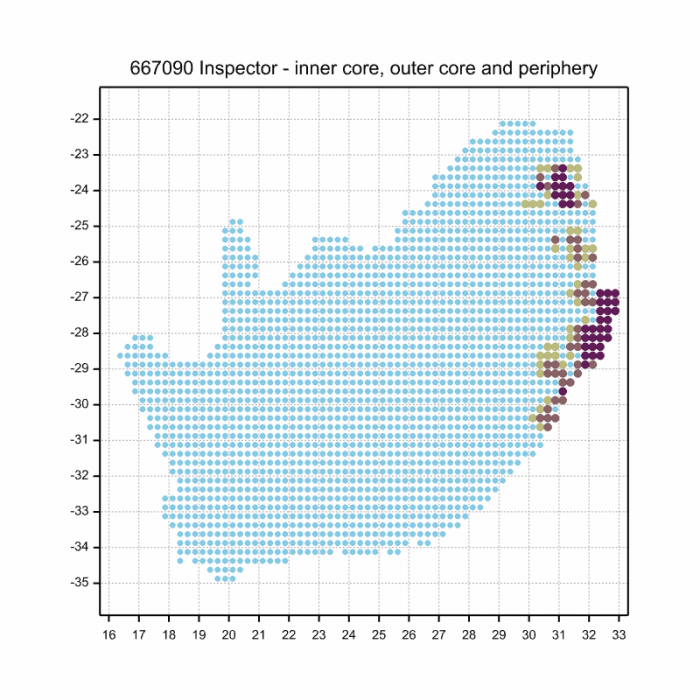
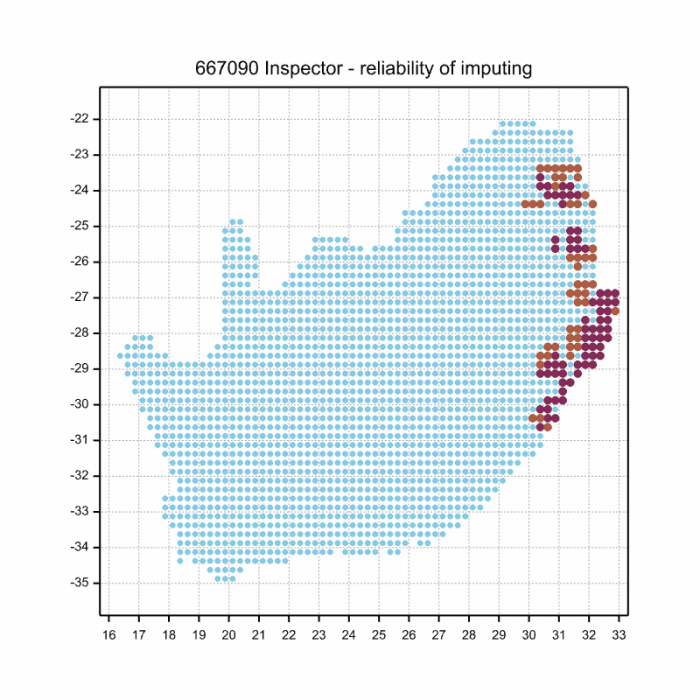
Ultimately, we will produce a series of maps for all the odonata species in the region. The current algorithm is a new algorithm. The objective is mainly to produce “smoothed” maps that could go into a field guide for odonata. This basic version of the algorithm (as mapped above) does not make use of “explanatory variables” (e.g. altitude, terrain roughness, presence of freshwater — we will be producing maps that take these variables into account soon). Currently, it only makes use of the OdonataMAP records for the species being mapped, as well as all the other records of all other species. The basic maps are “optimistic” and will generally show ranges to be larger than what they probably are.
These maps use the data in the OdonataMAP section of the Virtual Museum, and also the database assembled by the previous JRS funded project, which was led by Professor Michael Samways and Dr KD Dijkstra.

